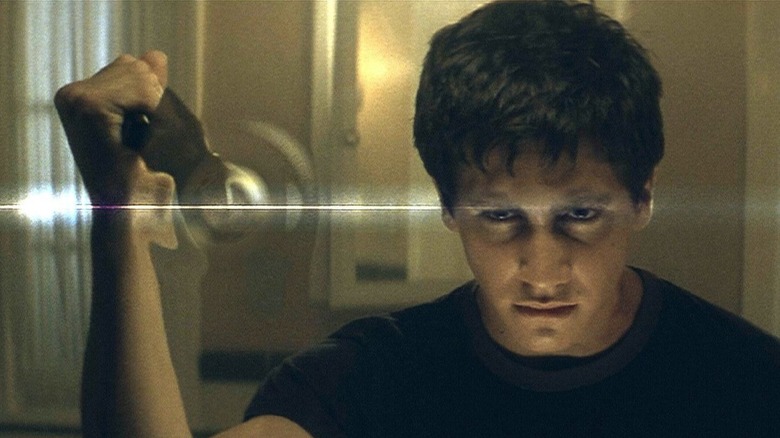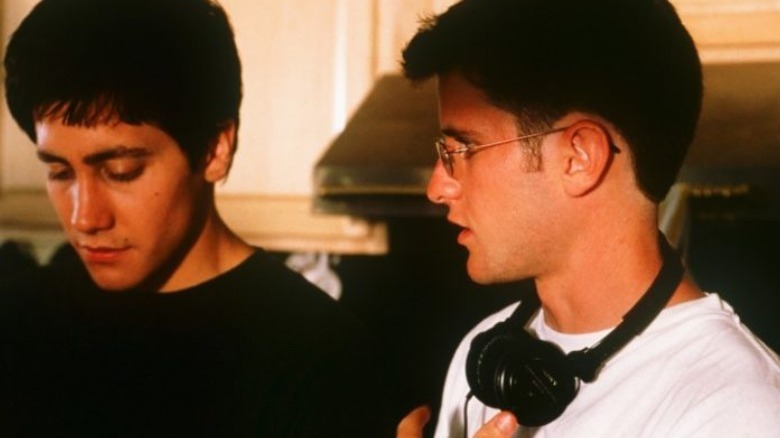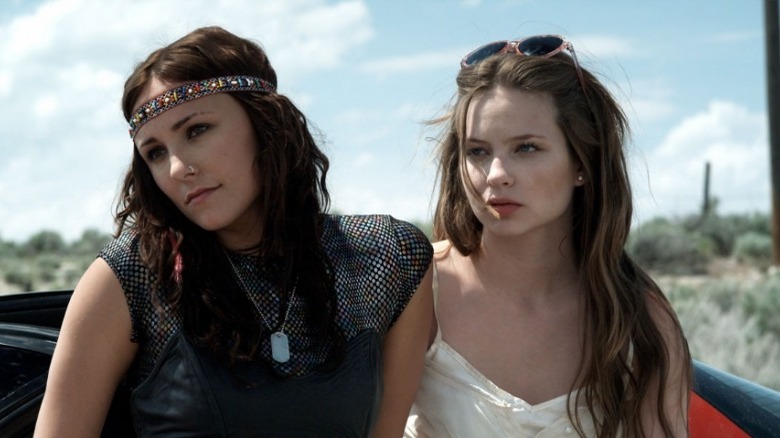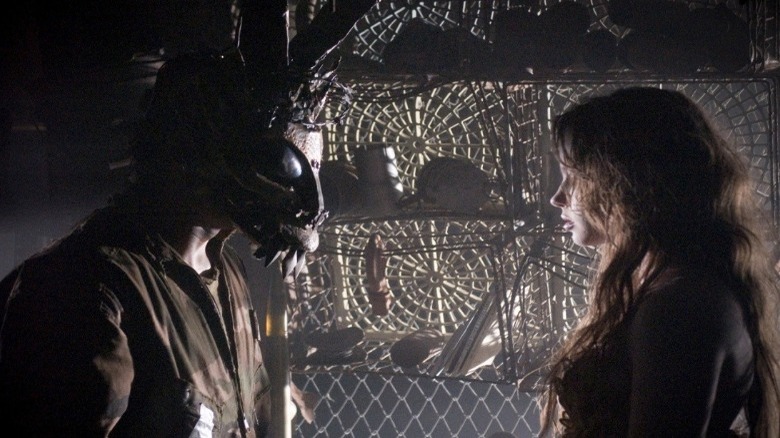Why The 2009 Donnie Darko Sequel Was Such A Mess
Given its acclaim (no. 2 on Empire's "50 Greatest Independent Films list) and its rabid fanbase, it's a bit surprising to note that "Donnie Darko" has mostly escaped any kind of franchise treatment. You would think fans would be more interested in digging into the strange, sprawling universe introduced in 2001 with writer-director Richard Kelly's original film. If the reaction to the 2009 sequel "S. Darko" is any indication, you would be wrong.
Even after the years of difficulty "Donnie Darko" underwent before it came to theaters in 2001, it didn't take long for it to find a cult following. It was one of many films from its era that saw a tepid response in theaters and a major boost on home video. And a couple of months removed from 9/11, its apocalyptic visions and dark analysis of suburban American life began to resonate with the kind of teenagers it was attempting to depict.
"Darko" had a legion of imitators over the next 20 years: low-to-mid-budget movies that follow paranoid and alienated young men navigating the line between reality and delusion. But none of its imitators drew from it as liberally as "S. Darko," the misguided sequel about Donnie's (Jake Gyllenhaal) little sister, Samantha (Daveigh Chase).
Richard Kelly's Impact
The first thing anybody notices about "S. Darko" is that the original's visionary Richard Kelly is nowhere to be found, outside of a token "Characters Created By" credit. Kelly was key to the success of "Donnie Darko" and it was key to his success in turn, setting the tone for his ambitious, funny, and thoughtful brand of sci-fi. For "Darko," his first script, Kelly broke into his own memories of growing up in suburban Virginia in the 1980's, and turned them over to form the basis of the story, about a young and disturbed man informed of the impending end of the world.
After the movie's initial fall 2001 release, Kelly had mostly turned to writing scripts, such as the one for Tony Scott's "Domino." But as the "Darko" audience began to grow, he negotiated with distributor Newmarket Films' president, Bob Berney, to release a director's cut that expanded on the original's themes and imagery, adding 20 minutes of screentime. Following that cut's 2004 release, Kelly could rest assured that he'd fulfilled his original vision.
Needless to say, he was shocked when he learned that a sequel film was in production in 2008. He immediately issued a press release denouncing it and clarifying his lack of involvement.
The Illegitimate Sequel
For "S. Darko" director Chris Fisher, the movie began out of admiration for the original. Kelly's response was the first of many difficulties facing the project. None of the original's many fans would go for what was effectively an unauthorized cash-in, which prompted an immediate backlash around the movie's release. When you consider that the movie was also focusing on the experiences of a teenage girl at a time where any such project got obliterated by the internet, the movie had very little going for it.
As is, "S. Darko" can't help but feel like a retread, even with the best intentions. Despite being a new story (one that Fisher likened to a fairy tale compared to "Donnie Darko's" graphic novel sensibility), its over-reliance on familiar imagery just makes you want to watch the original again. Even its overly clean, late-aughts digital photography looks fairly cheap now. It very much feels like the straight-to-video cash-in many accused it of being.
Like many such spin-offs, it focuses on a minor character whose actor came back. In this case, that's Samantha Darko (Daveigh Chase), who's embarking on a road trip with her friend Corey (Briana Evigan) and ends up in a small town in Utah, full of unsettling characters like disturbed veteran Justin (James Lafferty) and meteorite obsessive Jeremy (Jackson Rathbone). The time travel comes back. The bunny imagery comes back in the form of a mask that Justin makes (based on a drawing from Donnie). The movie even keeps the sacrificial edge of the original, with Justin surrendering his life to the meteor shower of the movie's first act, cleaning up the timeline that the movie has shuffled many times over. Mostly, it makes you miss the clarity of the original's story and its vivid supporting cast.
The Future of the Franchise
Nobody was going to like "S. Darko" from the moment Kelly denounced it, and at least some of the hate that it received came out of preconceptions made in the wake of that. But even when in viewed in good faith, removed from the expectations of following up a beloved film, it comes up short. The script is made up of incoherent time travel shenanigans that the performances struggle to make interesting. Even with some lovely Utah location photography, it mostly looks bland. Everything compelling about it comes directly from its source.
Years after "S. Darko's" release, Kelly has expressed some interest in revisiting the world of the movie, in making a "true sequel." Topping "S. Darko" wouldn't be too difficult, although he would still have to contend with a fanbase that has big expectations and a willingness to dismiss something that doesn't fit them. Just a couple years after its release, Fisher even called "S. Darko" a project he "shouldn't have done."



